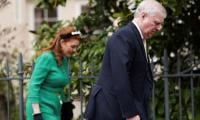Pakistan’s economic recovery outlook is not promising. The recent election in Pakistan reflects a recurring pattern seen in many elections, where financial considerations are often disregarded in pursuing political power.
The country’s major political stakeholders are currently prioritizing the development of a hung parliament or PDM-2 instead of focusing on the economy. There is also a division among the nation’s economic experts regarding the best approach to managing Pakistan's economy.
Pakistan’s challenges have intensified following the elections. The aspiring parties are open to accepting conditions from elected members that may not align with the IMF’s expectations. Concerns over a potential political stalemate in Pakistan have triggered a sell-off in its international bonds and raised fears of economic setbacks and a lack of foreign funding.
Pakistan is grappling with substantial financial challenges, including a decline in foreign currency reserves and an upcoming $1 billion bond payment. The funding programme with the IMF is scheduled to end in April 2024. There is a risk of economic and ideological disagreements within a coalition government or a potential delay in negotiations with the IMF in the coming months. The question is: will the upcoming government provide much-needed economic stability to the country or lead to potential disaster?
Let’s examine Pakistan’s major challenges and possible solutions. According to the most recent World Bank policy notes, 40 per cent of children in Pakistan under the age of five face the issue of stunted growth. More than 75 per cent of Pakistan’s 10-year-old children face challenges when it comes to reading and understanding simple texts.
Pakistan’s tax revenue is significantly lower than other developing nations. A significant number of farmers are not subjected to taxation as their land holdings are below the exemption threshold of 12.5 acres. Pakistan is also grappling with a challenging situation regarding the management of mass migration, as a significant number of highly skilled professionals have chosen to leave the country in search of better opportunities.
All these issues impede Pakistan’s potential for prosperity and efforts to reduce poverty. The poverty rate in Pakistan is a pressing issue, and it has risen significantly in just one year, from 34.2 per cent to 39.4 per cent, according to World Bank data for 2023.
Poverty is a complex issue that extends beyond economic factors and encompasses social, political, and cultural dimensions. Thus, addressing poverty necessitates a holistic approach beyond economic strategies and encompasses a well-coordinated array of measures. In addition, mere economic expansion is inadequate for addressing poverty. The impact of growth on poverty is significantly influenced by changes in distribution.
When progressive distributional changes accompany growth, it can have a much greater effect in reducing poverty than growth that does not alter the distribution. Therefore, the upcoming government poverty reduction strategy must include policies that enhance the fair distribution of income and assets within society. This can be achieved through initiatives like comprehensive economic reforms to enhance the fiscal framework, increased public spending on programmes that benefit people with low incomes, and measures to improve their access to financial markets.
This also includes generating more revenue from non-filers and under-taxed sectors and improving public financial management. These measures will allow the government to allocate more funds towards social and development initiatives.
The issue of inflation persists, impacting the most vulnerable individuals. The State Bank of Pakistan must adopt a proactive approach to ensure that inflation levels return to a more manageable state. Pakistan also requires a market-determined exchange rate to cushion against external shocks, sustain the rebuilding of foreign reserves, and bolster competitiveness and growth.
The current account has recently displayed a surplus while the value of the rupee against the dollar has maintained its stability. However, this trend may change once imports start flowing again and there is a greater demand for dollars.
Another big challenge for the upcoming government is to tackle financial institutions with insufficient capital and maintain a watchful eye on the financial sector to uphold financial stability. Enhancing employment opportunities and promoting inclusive economic development in Pakistan necessitates ongoing support for the underprivileged through BISP and expediting necessary changes to improve the business climate and ensure fair competition for investors.
Establishing partnerships between the public and private sectors in Pakistan is crucial. These partnerships are essential for fostering innovation, building productive capacity for regional value chains, and facilitating joint activities across provinces. Finally, improving human capital can significantly impact Pakistan’s economic fundamentals and reduce poverty.
To achieve these goals, it is crucial to focus on formulating and enforcing national economic development plans. If the upcoming government continues to make the same errors as before, it will be challenging to revive the economy.
The writer heads the Business Finance Programme at Birmingham City University, UK. He tweets @HafizUsmanRana















